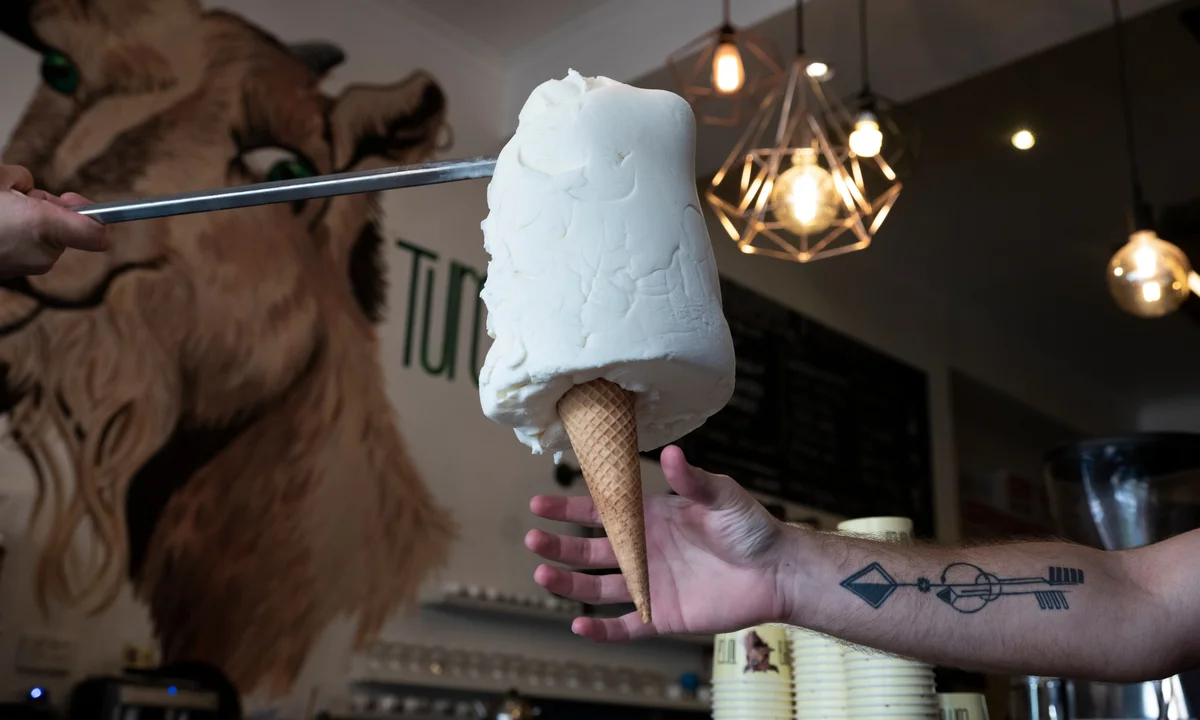
Dondurma, the Turkish term for ice cream, originates from the city of Kahramanmaraş, nestled in the southeastern region of Turkey. This distinctive frozen dessert is renowned for its elastic texture and remarkable resistance to melting, characteristics that set it apart from conventional ice creams around the world. Culinary historians believe that dondurma was refined and perfected in this region during the Ottoman Empire, with some accounts tracing its earliest forms as far back as the 16th century. The name “Maraş Dondurması” not only acknowledges its geographical origin but also honors the rich artisanal traditions of the local craftsmen who helped shape its legacy. Over time, this regional specialty has evolved into an iconic symbol of Turkish gastronomy, celebrated both domestically and internationally as a testament to Turkey’s diverse and time-honored culinary heritage.
Unique Ingredients: Salep and Mastic
What sets dondurma apart from other ice creams are two key ingredients: salep and mastic. Salep is a flour made from the tubers of wild orchids, specifically from the genus Orchis. This ingredient gives dondurma its characteristic elasticity and resistance to melting. Mastic, a resin obtained from the mastic tree, imparts a subtle pine-like flavor and further enhances the chewiness of the ice cream.
The Traditional Preparation Process
The preparation of dondurma is a labor-intensive process. The mixture of milk, sugar, salep, and mastic is heated and then continuously churned and beaten with long-handled paddles. This method, known as “dövme,” ensures the dense and stretchy texture that dondurma is famous for. The resulting ice cream is so firm that it can be sliced with a knife and eaten with a fork.
Cultural Significance and Street Performances
In Turkey, purchasing dondurma is often accompanied by a playful performance. Street vendors, dressed in traditional attire, engage customers with a series of tricks, flipping and twirling the ice cream cone, teasing the buyer before finally handing it over. These performances have become a tourist attraction in their own right, adding to the cultural experience of enjoying dondurma.
Environmental Concerns and Salep Harvesting
The increasing demand for dondurma has led to concerns about the sustainability of salep harvesting. It is estimated that producing one kilogram of salep requires between 1,000 to 4,000 orchid tubers. This high demand has resulted in the overharvesting of wild orchids, leading to local extinctions in some areas. Consequently, the Turkish government has implemented a ban on the export of true salep to protect these native species.
Modern Adaptations and Global Availability
Despite the export ban on salep, dondurma has gained international popularity. To meet global demand, some producers have developed alternative recipes using different stabilizers to mimic the unique texture of traditional dondurma. Brands like MADO have expanded internationally, bringing Turkish ice cream to a wider audience while adapting to local regulations and ingredient availability.
Dondurma in Turkish Cuisine
Dondurma is not only enjoyed on its own but also plays a role in various Turkish desserts. It is commonly paired with baklava, providing a cool and chewy contrast to the sweet and flaky pastry. Additionally, dondurma is used in desserts like künefe, where its resistance to melting complements the hot, syrup-soaked pastry.
Experiencing Dondurma in Turkey
For those visiting Turkey, experiencing dondurma firsthand is a must. Cities like Istanbul and Antalya are known for their vibrant street scenes, where vendors perform their ice cream tricks for delighted audiences. In Kahramanmaraş, visitors can taste the original Maraş Dondurması and learn about its rich history and traditional preparation methods.
Conclusion
Dondurma stands out in the world of frozen desserts due to its unique texture, traditional preparation, and cultural significance. Its rich history and the artistry involved in its creation make it more than just a treat—it’s a symbol of Turkish heritage and a testament to the country’s culinary innovation.
